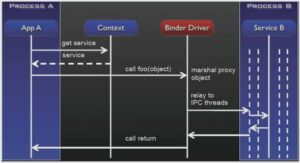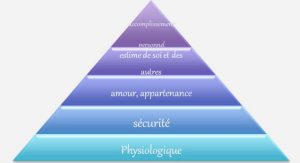Rememories and Mentorship as Cultural and Spiritual Recovery in Paule Marshall‘s Praise Song
Rememory and Geographical Approach as a Quest for Identity
The literary prospect of the past in Paule Marshall and Toni Morrison is an important issue because all evolves around the past. The past is the portion of the timeline that have already occurred .It is the opposite of the future .It is also contrasted with the present .But this past in Praise Song For The Widow and Song of Solomon has an important role to play in carrying one‘s personality and bringing back through its background . It also introduces the concept of history as ―rememory‖, an approach that views history not a series of significant public events marked by wars and other national crises but as a compilation of stories filtered through the personal memories of individuals, collective experience, including songs, poems and personal stories. Toni Morrison and Paule Marshall‘s novels revolve around the search for identity. The desire to know oneself dominates the actions of the characters in the novel, and it is through their actions that an interconnectivity between the past, geography and identity is made apparent. Throughout novels, both writers present geography as a manifestation of time, and posit that an awareness of the past is integral to each character discovering their true identity. Morrison explores this connection by describing to the reader, the journey of the protagonist, Milkman, to his ancestral home in the South. It is only by undertaking this physical, geographical journey that he can unlock his past and identity, and genuinely understand himself.Within dispurspective, meaning their loss of values Marshall summons (up) history and through to the vestige of past, he awakes the typical African realities that has lain dormant in Avey‘s unconsciousness when Avey in a voyage disembarks in Grenada and from then, she started a cultural pilgrimage, a connection with the past, a return to source.
Rememory as Self Identity
Memory is how information is encoded, stored, and retrieved. Encoding allows information from the outside world to be sensed in the form of chemical and physical stimuli. In the first stage the information must be changed so that it may be put into the encoding process. Storage is the second memory stage or process. This entails that information is maintained over short periods of time. Finally the third process is the retrieval of information that has been stored. Such information must be located and returned to the consciousness. Some retrieval attempts may be effortless due to the type of information, and other attempts to remember stored information may be more demanding for various reasons. 11 From an information processing perspective there are three main stages in the formation and retrieval of memory: Encoding or registration: receiving, processing and combining of received information Storage: creation of a permanent record of the encoded information in short term or long term memory Retrieval, recall or recollection: calling back the stored information in response to some cue for use in a process or activity The loss of memory is described as forgetfulness or amnesia.23 Memories can in a way define who we are and how we progress through life24 . Memories can be a pathway to either follow the straight and narrow or to have us decide which fork of the road to take. Past memories can help to identify a person and can affect the future that follows. Consequently, we receive apparently disjointed fragments of stories that are understandable only in retrospect 25.In reality the inclusion of the past has helped the protagonist Avey and Milkman to delve into the past, to get memories, and to understand what belong to them. Avatara is the name Avey‘s Aunt Cuney chose for her. Avatara has been called to pass along the culture from one generation to the next by Cuney, who has performed that role. Cuney appears in Avatara‘s dreams to call her back to a remembrance of her ancestors. Marshall writes the story of Avatara‘s movement away from and back to her cultural roots by using several techniques. She divides the novel into four parts to describe the stages of Avatara‘s journey, and she uses images and symbols that are peculiar to the feminine creative experience. While Avatara progresses from one stage to the next, Marshall recounts Avatara‘s dreams, which are often detailed memories of past experiences that may have been either personal or communal26 . These memories have relevance to the present when Avatara notices the resemblances between the ceremonial rituals she witnessed as a child and those she observes at Carriacou. Marshall‘s references to literary selections written by black writers from the United States are apt expressions of black experiences that occurred on slave ships in the Caribbean and in the collective consciousness of black people regardless of their geographical location.
Mentorship as Culture Rebuilding
Mentorship is a relationship in which a more experienced or more knowledgeable person helps to guide a less experienced or less knowledgeable person. The mentor may be older or younger than the person being mentored, but she or he must have a certain area of expertise. It is a learning and development partnership between someone with vast experience and someone who wants to learn.Mentorship experience and relationship structure affect the amount of psychosocial support, career guidance, role modeling, and communication that occurs in the mentoring relationships in which the protégés and mentors engaged. The person in receipt of mentorship may be referred to as a protégé (male), a protégée (female), an apprentice or, in the 2000s, a mentee. Mentoring is a process that always involves communication and is relationship-based, but its precise definition is elusive, with more than 50 definitions currently in use. One definition of the many that have been proposed, is Mentoring is a process for the informal transmission of knowledge, social capital, and the psychosocial support perceived by the recipient as relevant to work, career, or professional development; mentoring entails informal communication, usually face-to-face and during a sustained period of time, between a person who is perceived to have greater relevant knowledge, wisdom, or experience (the mentor) and a person who is perceived to have less ―(the protégé)‖. Mentoring in Europe has existed since at least Ancient Greek times. Since the 1970s it has spread in the United States mainly in training contexts, with important historical links to the movement advancing workplace equity for women and minorities, and it has been described as ―an innovation in American management‖61 Pilate is the ancestor who, as the critic Stelamaris Coser notes, represents ―the only sign of a vital black tradition surviving in the urban industrial environment‖. Women are very significant in the process of culture attainment.Their role consist of passing the culture heritage from one generation to the another (aunt Cuney and Pilate) although men such as Lebert Joseph and Guitar Bains influence this process, Women perform the task in a community particularly patriarchal .The inclusion of women strength and combating for culture recognition is all about Marshall‘s and Morrison‘s preoccupations. 61www.jstor.org/African American Review/definition of mentorship
The Issue of Mentorship in Culture Rebuilding
In Praise Song for the Widow Great aunt Cuney played a key role in Avey‘s search for her cultural heritage. When Avey was a little girl, Cuney required that she be sent to Tatem every August to the place of Igbo Landing. There, she gives her the name Avatara and tells her the oral narrative passed down about the African of the Igbo Landing. After that Cuney also introduces her niece to the ―ring shout‖ which was practiced by the old black of Tatem. Besides, it is Aunt Cuney‗s mentorship that avails Avey to make dreams of the past and leave her vocation cruise and meet Lebert Joseph in the island of Grenada. In mentoring, Avey ,Aunt Cuney can be considered as a spiritual mother and Lebert Joseph remains the cultural and spiritual father .As far as father Joseph is concerned ,he persuades Avey to go with him to the ritual journey back to his home: Island of Carriacu .After that , he questions Avey about the nation she belongs ,the sort of dances she can perform ,upon which Avey get reconnected with her past. With the help of Pilate and Guitar, Milkman eventually discovers the secret of Solomon’s song once he recognizes the vital link between the past and the future. His mission to find Pilate’s gold takes him back to his ancestral roots, enabling him to learn the origin of his name and to reconnect with the black community ; his tribe. This is mostly represented throughout the chapter eleven which marks a turning point in Milkman‗s spiritual growth and depicts marked changes in his cultural awareness, his sensitivity towards others, and his ability to commune with the nature. Also significant, is Milkman‗s participation in the back cultural ritual of verbal sparring signifying with the men at Solomon‘s General Store,which indicates his ability to relate to black men and to reconnect with the heart and soul of the black community .In Shalimar, Milkman has matured enough to recognize the verbal challenges, whereas in Southside, he was not even aware that verbal sparring was a form of challenge, everybody smiled, including Milkman. It was about to begin. Unlike his futile attempts to participate in this form of word play with the Southside men, this time Milkman proves himself a worthy contestant in Shalimar. 1.1 The Role of the Community in Culture Rebuilding Morrison‘s novels are about triumph and failure in African American communities. Morrison believes that her writings must be about the community and the individual, or it will not be about anything. 37 Thus, her novels depict women gathered in kitchens talking together or going to the barbershops, they also show men gathering in pool halls.Because of its role in creating ritual and determining appropriate behavior, community is a powerful a force in Morrison‘s novels as any of her characters. Throughout her fiction, Morrison stresses that one‘s identity is dependent upon and inseparable from the community, even if the community is seriously flawed.62 Morrison‘s novels subverts traditional Western notions of self- identity as a reflection of an inner ―essence‖. Instead, she challenges the notion of the self in her novels by creating representations of community which that identity is constructed through social relations. In other words, one‘s identity is always dependent on community, no matter how functional the community may be. Self and community are inseparable in the African cosmos. In other words, the individual cannot exist from his or her relationship with others.63 In Morrison‘s novels, the values of a community are the measuring for an individual‘s behaviors. Since the community embodies cultural memory, individuals must be part of it if they are to be whole. We have also the concept of neighborhood as community through which characters understand history is an important one too. Morrison grew up in Lorain, Ohio, where the entire community took part for raising each child. Her upbringing explains why in her novels, her characters are generally better off when they are close to the community. Community affirms a culture‗s traditions and beliefs in her characters. However, we notice that sometimes physical proximity to the community is less important than emotional attachment to it.One of the primary themes in Morrison‘s fiction is the relationship between the individual and the community .Her third novel, Song of Solomon, follows a bildungsroman (a novel tracing the spiritual, moral, psychological, or social development and growth of the main character, usually from childhood to maturity) pattern, but Morrison gives much space (most of the first part of the novel ) to Milkman‘s home life before he leaves .The inclusion of such details of community ‗s influence on creating individual character
Dedication |






